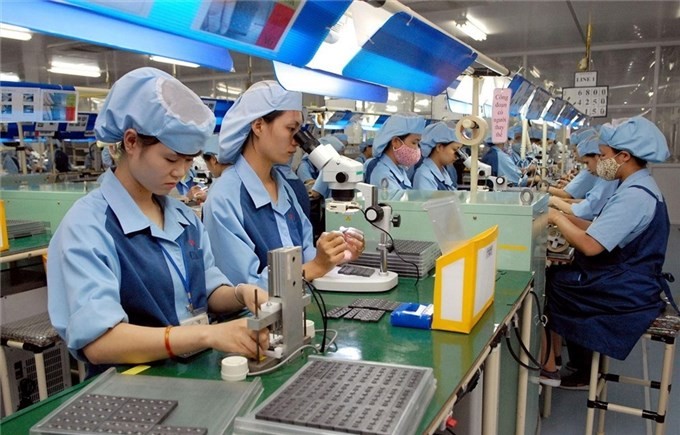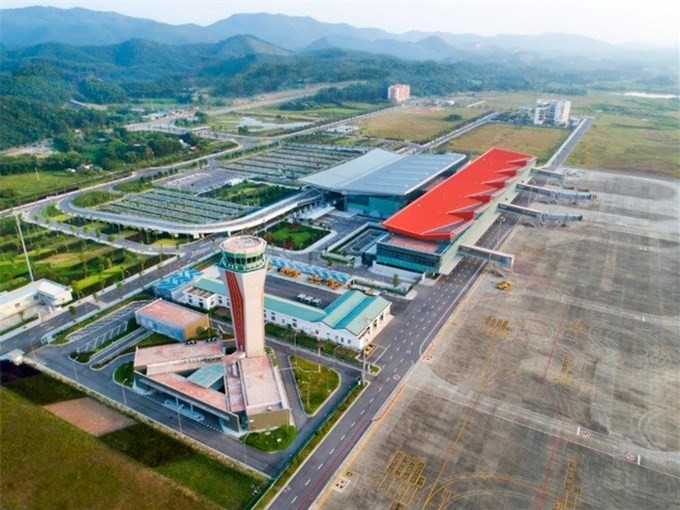
Private economic sector: The driving force in the post-Covid-19 era
Latest
The 13th National Party Congress stated that the Vietnamese private sector “must be strongly developed qualitatively and quantitatively, effectively, and sustainably, and be turned into a significant impetus for national economic development.”
 |
| The private sector currently contributes over 30% of state budget revenue and has a rapid growth rate of 15% per year. (Photo: Lao Dong) |
The important driving force of the economy
During 35 years of Doi Moi, under the leadership of the Party, the private sector has witnessed a wide and deep development throughout the country, making important contributions to economic development, mobilizing social resources for production and business, creating more jobs, improving people's living conditions, increasing the state budget, contributing to maintaining political stability and social security of the country.
At present, the private sector has become one of the three important pillars, playing a leading role in the development of Viet Nam's economy.
According to the Ministry of Planning and Investment, the private sector has continuously maintained a good growth rate, accounting for 39-40% of GDP, ranked first among all types of enterprises and is aiming to increase to 55% by 2025 and to about 60 - 65% of GDP by 2030.
With 800,000 active enterprises and 5.4 million household businesses, it is also creating 45 million jobs, accounting for 85% of total employment in the economy.
In addition, the private economic sector currently contributes over 30% of state budget revenue and has a rapid growth rate of 15% per year, 2 times higher than the foreign-invested economic sector and 1.5 times higher than the public economic sector.
The above figures show that the private economy is increasingly becoming an important driving force of the Vietnamese economy.
In addition to important economic achievements, the position of the private sector is increasingly enhanced in political and social life. It has contributed to the realization of industrialization and modernization, changing the "face" of the country and enhancing the position and prestige of Viet Nam in the international arena.
According to Dr. Vu Tien Loc, former President of the Vietnam Chamber of Commerce and Industry (VCCI), during the 35 years of Doi Moi, entrepreneurs and the private sector in Viet Nam have made miraculous strides.
The development of the private sector has lifted tens of millions of people out of poverty. It also transformed Viet Nam from a poor, war-torn country into a middle-income country.
Dr. Vu Tien Loc emphasized: “Apart from a large business community, Viet Nam has more than 800,000 private enterprises operating in all areas of the economy. The country also has large enterprises standing alongside leading brands globally and regionally, contributing to the country's glory in the period of innovation and global integration.”
 |
| Van Don International Airport is the first private airport of Viet Nam. (Photo: Dan tri) |
Development of the private sector in the new situation
In the time being, the private sector’s quality of development still has limitations, said the Minister of Planning and Investment Nguyen Chi Dung.
For example, the productivity and productivity growth rate of the private sector is still low. The average productivity of labor in the private sector is only about 34% compared to that of state-owned enterprises and about 69% of foreign-invested enterprises.
Furthermore, the scientific and technological capacity of enterprises is still limited. Some enterprises are reluctant to invest in the application and development of science and technology.
Currently, only 10% of enterprises have registered, or successfully registered 1 patent within 3 consecutive years; investment in technology innovation only accounts for about 0.3% of revenue, much lower than in countries such as India (5%), South Korea (10%)…
Moreover, many enterprises have not focused on improving linkages and competitiveness to participate in regional and global value chains. Currently, only about 21% of SMEs can participate partly in the global value chain, 14% succeed in linking with foreign partners, while Viet Nam has a large number of foreign direct investment enterprises.
In the coming time, in order to overcome difficulties and challenges, Viet Nam should have new mechanisms and policies to further develop the private sector, especially in the post-pandemic period.
As stated in a joint report by the International Finance Corporation (IFC) and the World Bank (WB), the private sector has played a pioneering role in Viet Nam's outstanding development in recent years and its potential needs to be further exploited.
“The private sector has helped propel Viet Nam to join the ranks of middle-income economies in just one generation, and the country was preparing for its next economic transformation during the COVID-19 pandemic”, said Kim-See Lim, IFC regional director for East Asia and the Pacific.
“With another wave of infection, it’s all the more imperative for Viet Nam to help develop a dynamic, diversified, and innovative private-sector for the post-COVID-19 recovery phase, as public resources become scarce.”
Carolyn Turk, World Bank Country Director for Viet Nam, said Viet Nam's emerging and dynamic private sector proved its resilience during the COVID-19 pandemic, as it helped Viet Nam become one of the few countries to obtain positive growth in 2020.
Therefore, Viet Nam needs to continue with stronger legal and structural reforms to create a stronger foundation for competition and innovation in the economy, in order to achieve further development of the private sector and the transition to a low-carbon economic growth model.
If all goes well, the private sector will become the leading factor in a high-income country by 2045, a milestone on the development path of the country as highlighted in the Resolution of the 13th National Party Congress.
As Viet Nam wants to move higher up in the global value chain by developing various industries of knowledge-intensive exports, services, and other higher value-added industries, the demand for skilled labor and modern technology will increase.
According to the IFC-WB report, it is essential to shift towards focusing on green, efficient and high-performance private investment, in order to maintain rapid and sustainable economic development for Viet Nam.
To achieve this, it is necessary to reduce barriers to domestic market entry, increase competitiveness to improve Viet Nam’s position in the global value chain, as well as to address skilled labor shortages and promote digitalization.
The report recommended that Viet Nam should focus on important areas such as creating an equal competitive environment, promoting financial access for SMEs, expanding long-term capital, strengthening and greening infrastructure services and securing a skilled workforce to achieve a high-value, innovative, and high-productivity growth model.
























